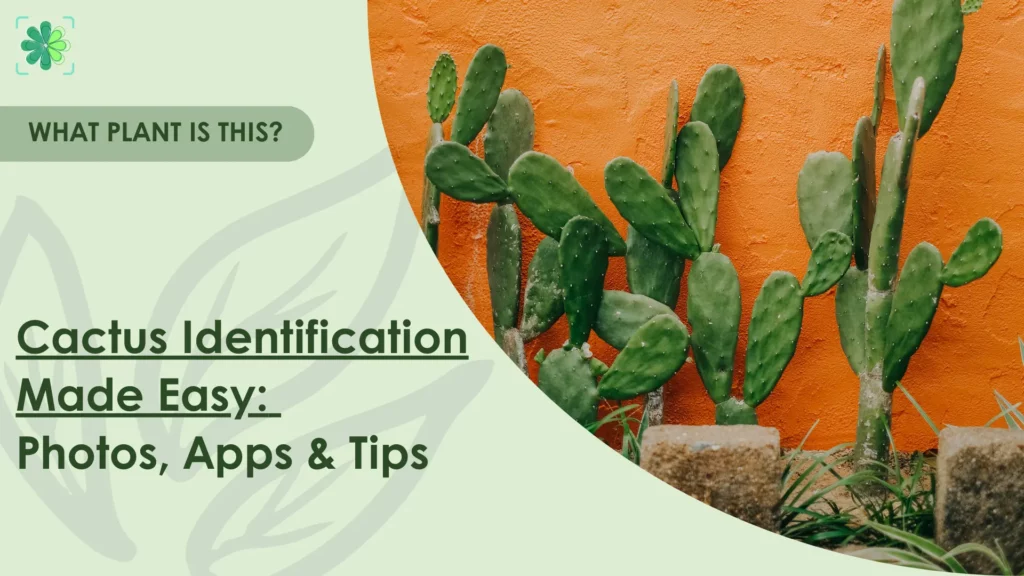
Cacti are fascinating plants with endless variety, but figuring out which one you’re growing can be surprisingly tricky. Some look almost identical until they bloom, or sting you with hidden glochids. This blog post will guide you through cactus identification with clarity, featuring photos, key features, and innovative tools. Let’s see what we bring to you!
Why Cactus Identification Matters?
Did you know that Mexico and the United States are the top two countries in the world for cactus diversity? Mexico leads with over 800 species, while the United States follows closely with around 350 native species, most of which are concentrated in the southwestern United States. Within the U.S., the Sonoran Desert in Arizona and the Chihuahuan Desert in Texas are especially rich in cactus biodiversity.
These regions are packed with native cacti. Some of which are endangered or protected by law. And for anyone who grows, collects, or buys cacti, knowing precisely what you have makes a real difference.
Here’s why cactus identification matters:
- Different species require different care: some thrive in full sun, while others suffer from sunburn.
- Some cacti are toxic to pets or have irritating hairs.
- Identifying your cactus helps you propagate it correctly.
- It prevents mistakes when buying or trading plants.
- It protects wild plants, especially cactus species of Arizona, from illegal collection.
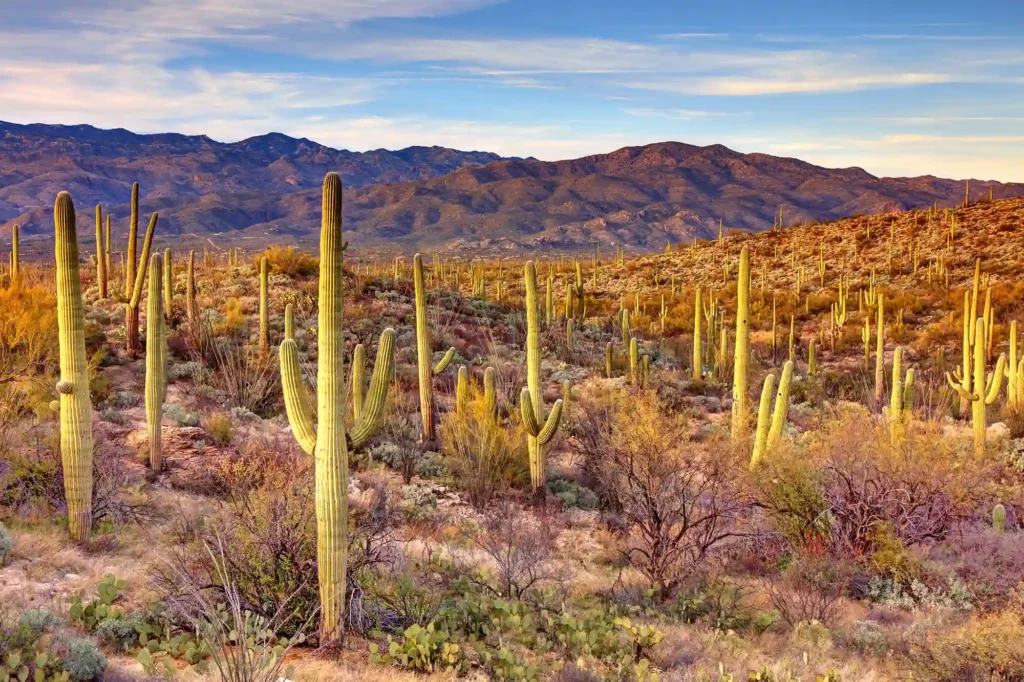
Cactus Field in Arizona, United States
How to Identify a Cactus?
When you’re trying to identify a cactus, start with the basics: shape, spines, and skin. Below are the core features to examine, presented in a way that helps both beginners and experienced growers recognize what sets one cactus apart from another.
Growth Form (Shape and Structure)
The overall shape of the cactus is the first thing to assess. It’s often the fastest way to narrow down your options, since growth form is tied closely to genus or species.
Most cacti fall into one of the following growth types:
- Columnar: These cacti grow tall and upright, often with ribbed stems and sparse branching. Common in arid deserts like the Sonoran, examples include Saguaro and Cereus.
- Barrel-shaped: Short and thick with well-defined ribs, often covered in dense spines. Seen in genera like Ferocactus and Echinocactus.
- Globular: Small, rounded forms that may grow solo or in clumps. Many Mammillaria, Gymnocalycium, and Rebutia species fall into this category.
- Pad-forming: Flat, jointed segments that resemble paddles. Opuntia (Prickly Pear) is the classic example, and it’s widespread across North and Central America.
- Trailing or epiphytic: Slender, hanging stems adapted to jungle environments. These plants grow on trees or rocks and are commonly found in genera such as Rhipsalis or Epiphyllum.
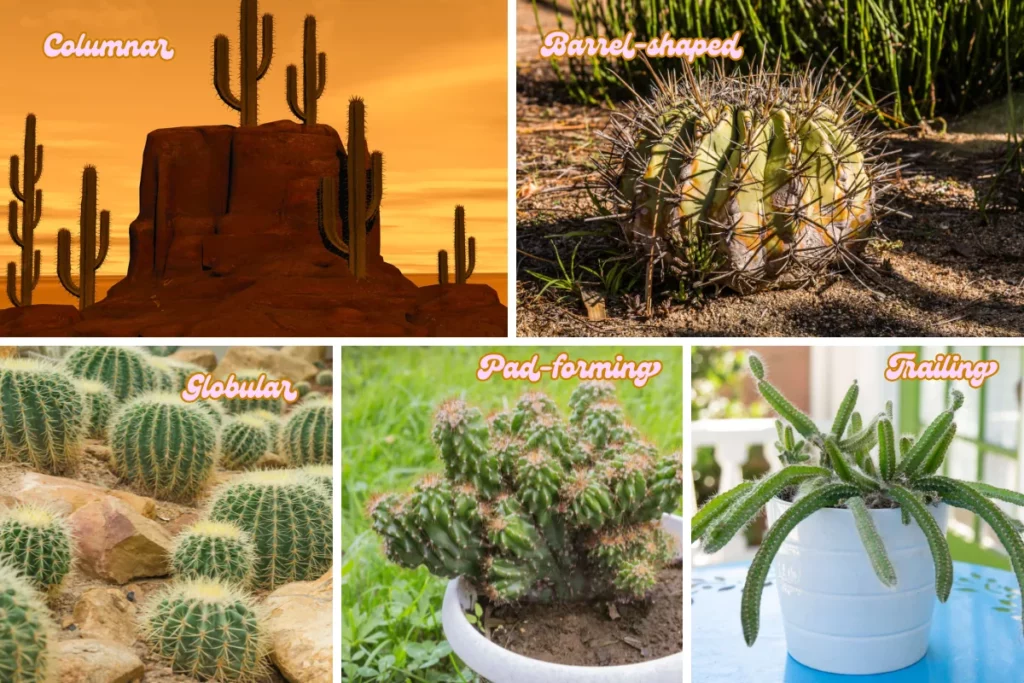
Areoles and Spine Patterns
If there’s one feature that defines a true cactus, it’s the areole. These are tiny, round or oval spots from which spines, flowers, and hair-like structures emerge.
Areoles are exclusive to the cactus family, and they’re the quickest way to distinguish a cactus from lookalikes like Euphorbia.
The position, size, and pattern of areoles vary:
- In barrel or columnar cacti, areoles tend to line up along ribs.
- In Mammillaria, they often sit at the tips of tubercles, arranged in neat spirals.
- Opuntia areoles are spaced across the flat pads and usually contain both spines and glochids — fine, hair-like bristles that detach easily and can irritate skin.
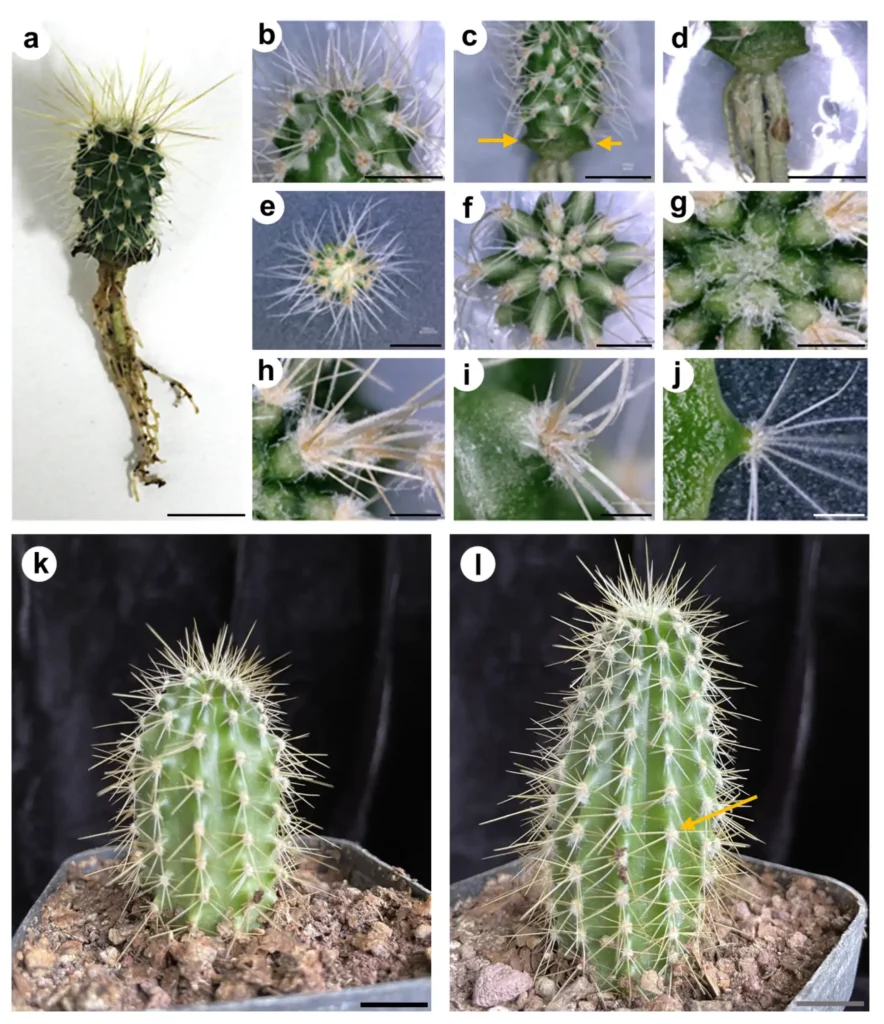
Spine patterns are just as important. Some cacti have long, hooked central spines. Others display fine, short radial spines that form a protective halo.
A few species, like Astrophytum, may have almost no spines at all. Look not only at how many spines exist, but also at their color, rigidity, and whether they grow in groups or alone.
Together, areole placement and spine type form the backbone of reliable cactus identification, especially when flowers aren’t present.
Ribs and Tubercles
The surface of the stem can tell you a lot. Many large cacti develop vertical ribs that allow them to expand and store water. These ribs vary in number and depth. Ferocactus, for instance, has deeply notched ribs with prominent areoles.
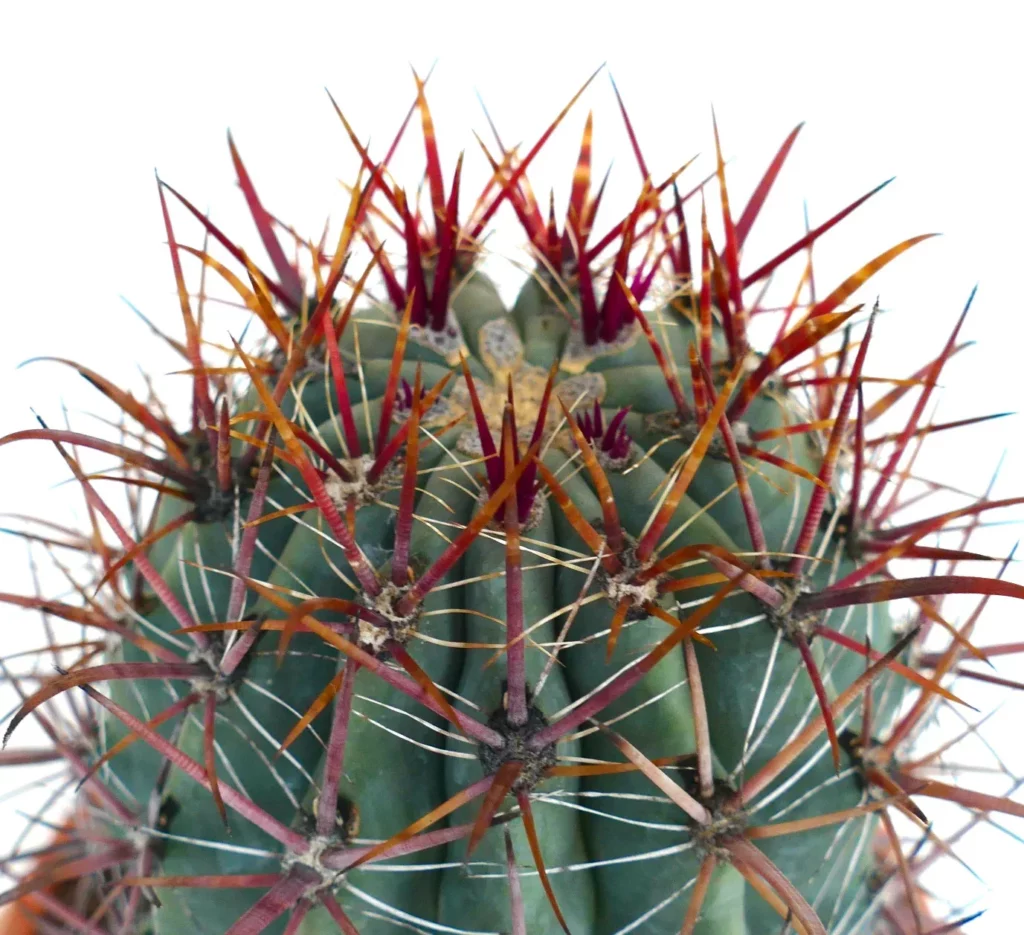
Ferocactus
Other species, especially globular cacti, have tubercles instead: small, rounded protrusions that replace ribs. These give the cactus a bumpy or knobby texture. The presence of tubercles is common in Mammillaria and Coryphantha, and in some cases, the flower only emerges from the tubercle’s areole.
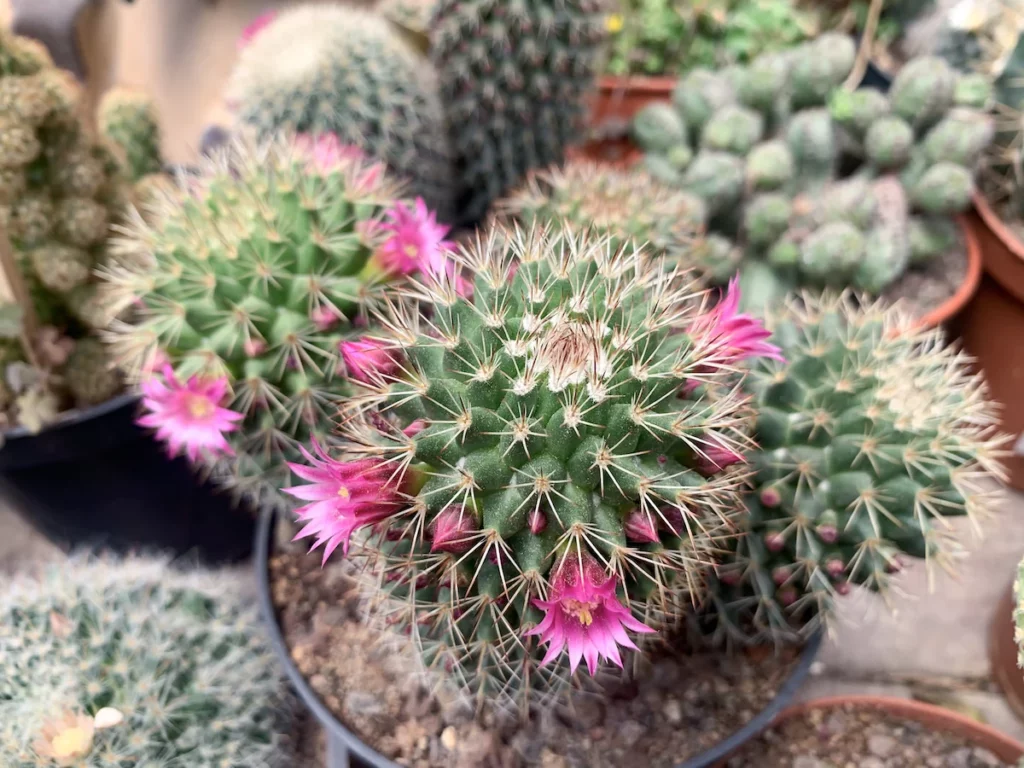
Mammillaria Cactus
What matters is not just whether ribs or tubercles are present, but how they’re arranged. Symmetry, spacing, and size all contribute to species-level ID and are essential components of accurate cactus identification.
Skin Texture and Color
While often overlooked, the skin of a cactus can offer helpful clues. Some cacti have a waxy, almost glossy surface that helps them retain water.
Others have a matte, dull appearance. You might also encounter fuzzy or hairy skins in alpine species like Espostoa or Old Man Cactus (Cephalocereus senilis), where the hair protects them from cold and intense sunlight.
Colors range widely:
- Green is the most common shade, but it can vary from deep emerald to pale lime.
- Blue-green tones are typical in species like Pilosocereus.
- Stress, cold, and sun exposure can introduce shades of purple, red, or yellow.
Color alone won’t confirm an identity, but combined with shape and spine traits, it adds another layer to the puzzle.
Flowers and Blooming Habits
If your cactus is in bloom, you’re in luck. Flowers are some of the most species-specific features you can observe. Details like size, shape, color, and the position of the bloom (whether it appears at the top, side, or crown) all help narrow down the options.
For example:
- Mammillaria often produces small pink or white flowers in a ring around the top of the cactus.
- Rebutia and Gymnocalycium may display large, vibrant blooms that open wide during the day.
- Epiphyllum species produce spectacular night-blooming flowers that can span several inches.
Also consider timing: some cacti bloom only in spring, others in summer, and some just once a year for a few short days.
Seeds (for Growers and Collectors)
Cactus seeds are rarely used for everyday identification, but for collectors or growers, they provide an additional layer of detail. These seeds are usually small, black or brown, and can vary in shape and surface texture. Some are glossy and teardrop-shaped, while others may appear pitted or have a rough texture.
Identifying by seed is a slow process that requires magnification. Still, if you’re propagating species from seed, this knowledge helps ensure labeling accuracy, especially with lookalike seedlings that take months to reveal distinctive traits.
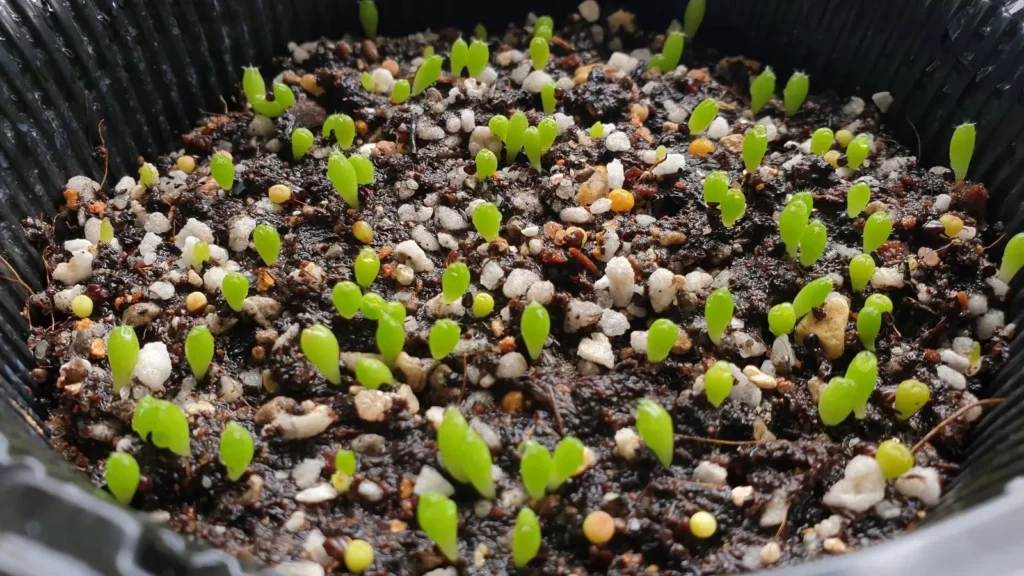
Common Cactus Types (with Photos & Key Features)
To give you a clear picture of cacti, here are 5 common types that gardeners, collectors, and desert hikers are most likely to encounter. Each type has its own signature shape and growth pattern, making it easier to narrow down your cactus identification.
Columnar Cacti
- Tall, upright stems with vertical ribs
- Grow as single trunks or branching columns
- Native to desert areas, including many cactus species of Arizona
- Examples: Saguaro, Organ Pipe Cactus, Cereus
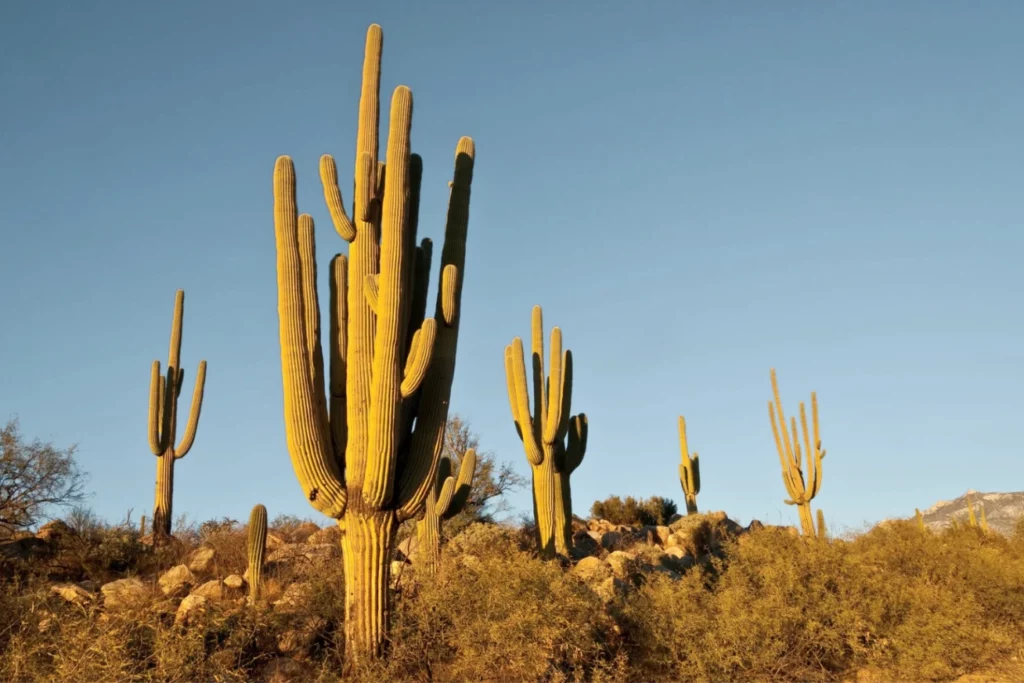
Barrel Cacti
- Short, rounded, and thick-bodied
- Prominent ribs with stiff or hooked spines
- Typically grows close to the ground
- Examples: Golden Barrel, Fishhook Barrel, Ferocactus species
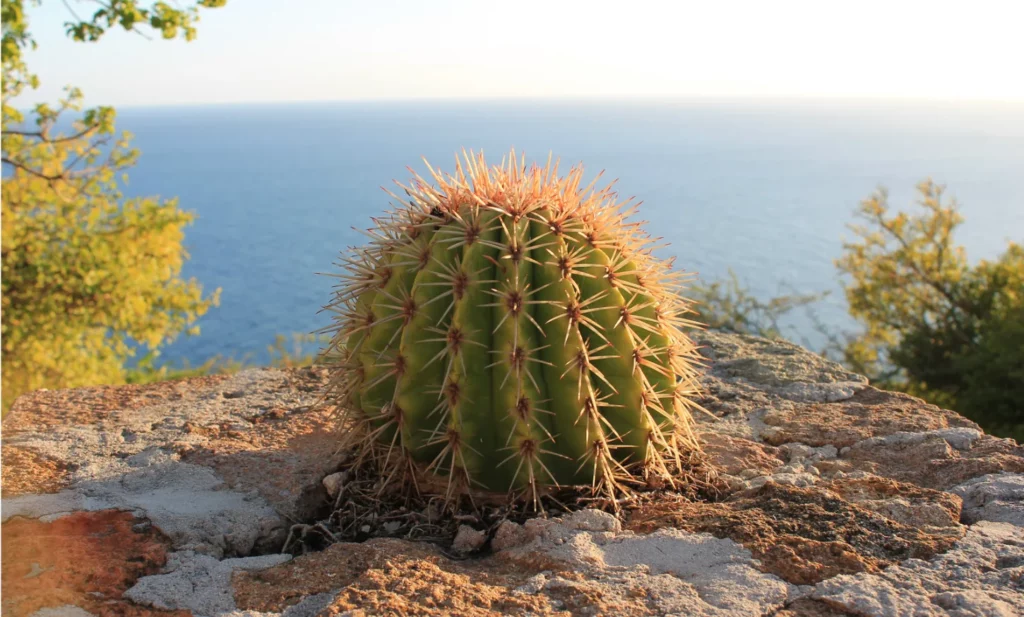
Prickly Pear (Opuntia)
- Flat, oval-shaped pads (not leaves)
- Covered in small spines and glochids (hair-like barbs)
- Produces colorful flowers and edible fruits
- Found widely across the southwestern U.S. and Mexico
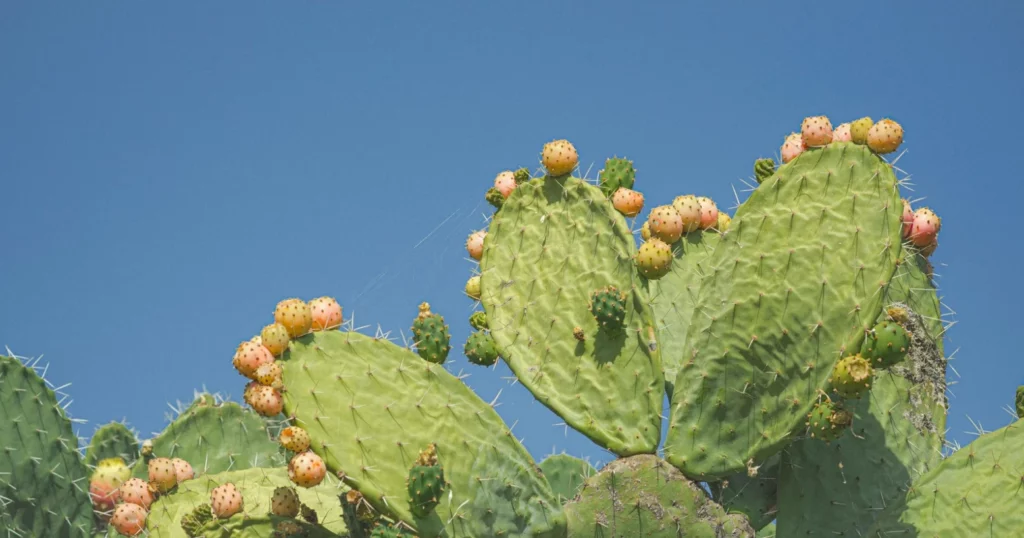
Globular Cacti
- Small, ball-shaped cacti, sometimes growing in clusters
- Covered with fine or woolly spines
- Many bloom with vibrant flowers around the crown
- Examples: Mammillaria, Gymnocalycium, Rebutia
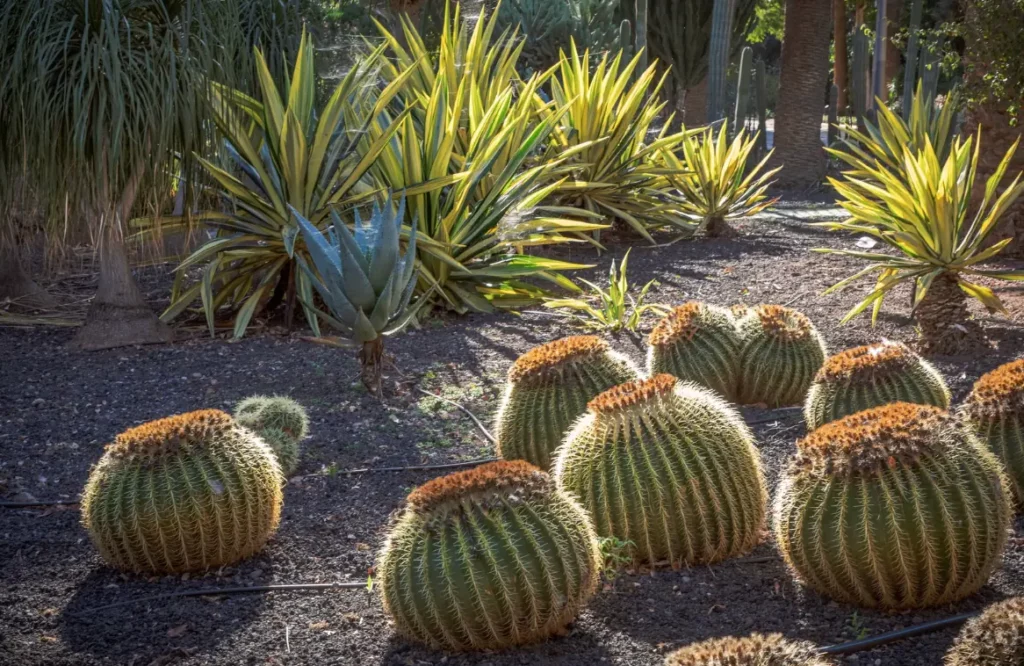
Hedgehog Cacti (Echinocereus)
- Short, cylindrical stems with dense spines
- Produce large, showy flowers in bright colors
- Named for their resemblance to a hedgehog’s shape
- Found in rocky areas across the southwestern U.S.

Totem Pole Cactus (Lophocereus schottii ‘Monstrose’)
- Smooth, spineless columns with a bumpy texture
- Mutated form of a desert cactus
- Grows tall and slow, often used in landscaping
- Native to northwestern Mexico and southern Arizona
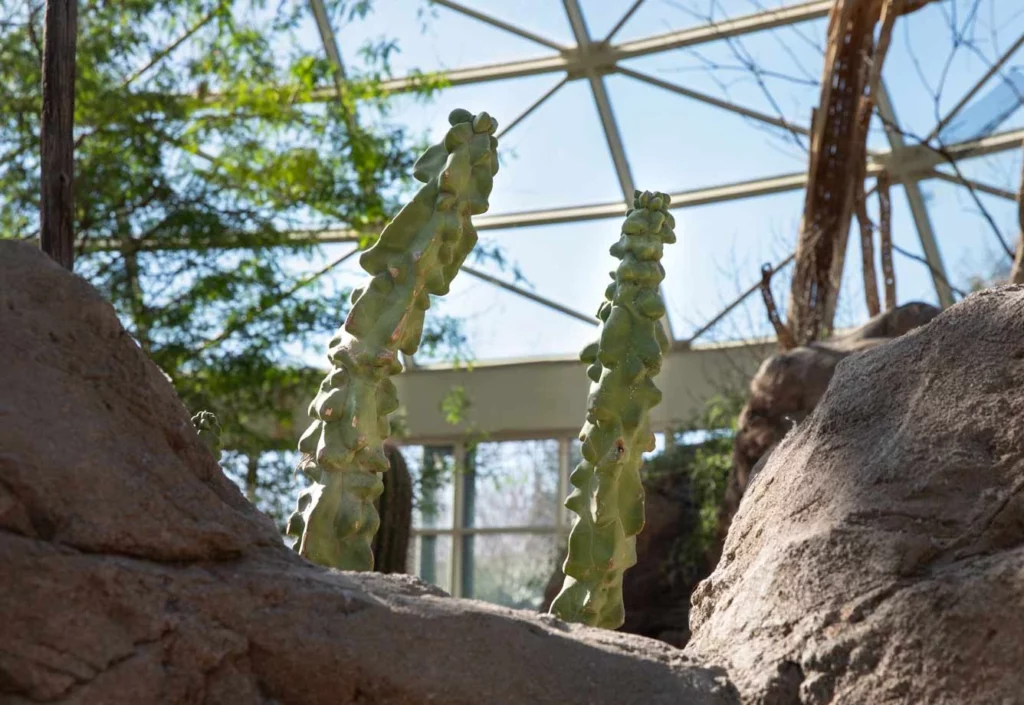
Cholla Cacti (Cylindropuntia)
- Cylindrical stem segments that detach easily
- Covered with papery sheaths and barbed spines
- Known for forming dense thickets in desert areas
- Native to the Sonoran Desert
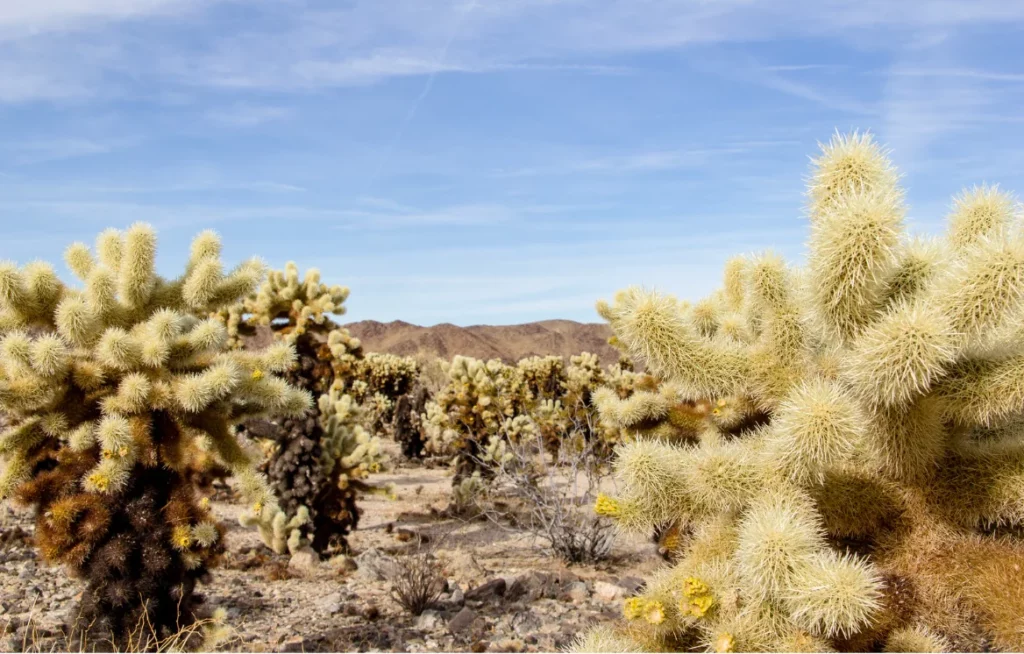
Best Tools for Cactus Identification
If you can’t identify your cactus by eye, there are several helpful tools to try:
- Planteyes – A super-powerful cactus identification app designed for plant lovers. Upload a clear photo and receive smart matches, along with care information. Ideal for home gardeners and collectors.
- Google Lens – Fast and accessible, but often less accurate for rare or unusual species.
- Plant identification books or cactus charts – Great for comparing shapes, flowers, and growing zones.
- Online forums and Facebook groups – Upload your cactus photo and get help from experienced plant enthusiasts.
Pro Tips for Confident Cactus ID
1. Take photos in natural daylight with a plain background.
2. Photograph your cactus from the top and side to capture its whole structure.
3. Don’t rely on spines alone. Some cacti have few or none.
4. Check for areoles. If there aren’t any, your plant might be an Euphorbia.
5. Observe changes over time. Some species change their appearance as they grow or bloom.
6. Track where you got the plant. If it’s from a desert nursery, check species native to that region (especially columnar cactus identification in the Southwest).
Conclusion
As you can see, cactus identification doesn’t have to be overwhelming. Once you know what to look for (shape, spines, flowers, texture), you’ll be able to recognize different species with more confidence. I hope you found this post helpful and feel more prepared to care for your cactus collection.
And if you want a faster, easier way to ID your plants, the Planteyes cactus identification app is one of the best tools out there. Simply snap a photo, and it takes care of the rest.
FAQs
What’s the easiest way to identify a cactus?
Start by examining the shape and spine structure, then inspect the flowers and areoles. If you’re unsure, try a cactus identification app like Planteyes.
Can Planteyes identify rare cactus species?
Yes. It compares your photo to a focused cactus database and often returns highly accurate results, even for uncommon types of cacti.
How do I know if I’m looking at a cactus or an Euphorbia?
Cacti have areoles — tiny, round structures where spines grow. Euphorbia may have similar shapes but often contain milky sap and no areoles.
Which cactus types are native to Arizona?
Some of the most iconic cactus species of Arizona include the Saguaro, Cholla, Prickly Pear, and Fishhook Barrel.


